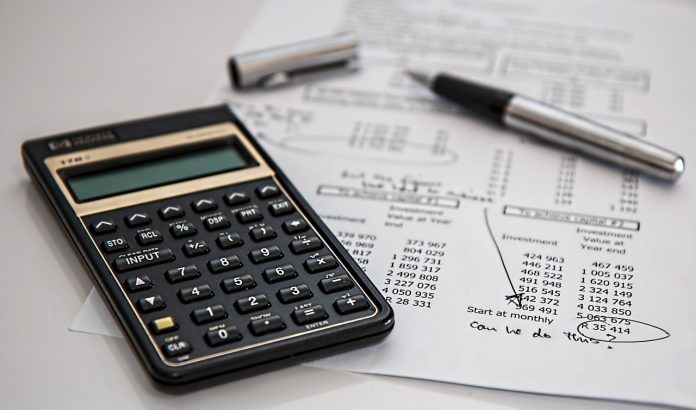Credit cards can provide rewards and a sense of security, but if you overspend on these credit cards, then the fees and interest can eat you alive. If you’re trying to break away from credit cards, then you need to spend less than what you make and aggressively tackle your balance.
Credit card debt is one of the biggest financial problems out there. According to the American Bankers Association, 41.7% of Americans are in credit card debt.
When you carry a huge balance with high interest from month to month, you end up with more interest than you can handle. This can also pose a threat to your credit score. Here are 11 ways to break your dependency on credit cards, according to industry expert Graylock Advisors.
1. Check Your Spending Habits
Maybe you’re aware that your credit card reliance is out of control. This can become an issue if you can’t control it. Once you’re stuck in the vicious cycle of fees and interest, it’s harder to spend less than you should. The first thing you should do is take a good look at your spending habits.
One way to do this is to use an old-fashioned technique such as pen and paper. Or, you can record your expenses on an Excel spreadsheet. There are free online programs through companies like Mint that allow you to import your transactions from your online statement. This will give you an idea of how much you really spend.
From there, you want to add up all of your spending from cash, credit cards, checking accounts, debit cards, and savings accounts. You want to track it for at least a month and notice your spending habits. Maybe you’re spending more than you should. If you keep this method up for a few months, then you’re more likely to decrease your spending habits.
2. Come Up with a New Budget
After you’ve tracked your spending habits for at least two months, you can see where most of your money is going. This is a good time to come up with a new budget that’s based on your needs. Your new budget should be based on how much you make each month. Financial programs like Mint can help you get an idea of your spending and determine a budget in different categories.
One way to come up with a new budget is to cut back on overspending, especially when it comes to variable expenses like groceries. If you spend $20 less each week, then you’ll get comfortable with this new form of frugal spending. You can cut back in other areas of your budget as well.
The key to this method is to come up with a budget for the things you need. You should also cut out the meaningless stuff such as subscription boxes or salon appointments. This can happen as long as you consistently keep up with your budget. You want to make budgeting a habit so you’re more likely to stick to it.
3. Build an Emergency Fund
This step can be hard for many families and individuals. Graylock Advisors says this is the perfect opportunity to find areas where you can save $10 or $20 each week and add these funds to a savings account. Over time, you’ll have a padding of savings that can help you in a pinch. Starting small can help you prepare for unexpected emergencies, which allows you to cut back on overspending.
Another way you can do this is by opening a high-yield savings account. Then you can invest $1,000 into your emergency fund. You’ll want to work up towards three to six months of savings. But this can take longer than expected, which is normal.
Keep in mind that your emergency fund should be used for emergencies only. It shouldn’t replace your credit cards. An emergency fund should not be used for regular expenses. It should only be used during major life events such as for surprise medical bills or the loss of a job.
4. Stop Using Your Credit Cards Altogether
The best way to give up your dependency on credit cards is to stop using them. If you’ve used your credit cards for both regular purchases and minor emergencies, then you’re using them too much. If you built enough money in your savings account, then you can cut back on your credit card dependency. And over time, you’ll break away from using credit cards as a financial crutch.
Since you’ve created a budget, you should do away with your credit cards altogether. You should only spend under the amount that you make each month. One way to start is to leave your credit cards behind when you leave the house. You should also remove them from your PayPal account and other online payment systems.
5. Keep Only Two of Your Credit Cards
The next step is to destroy all of your credit cards except for one or two. This allows you to use the credit cards without closing the accounts. It’s not a good idea to close a credit card account since it can hurt your credit score, but if you have a credit card addiction, then you should close your credit card accounts and accept the loss.
Overspending is an issue that can make it hard to improve your credit score. You might find that it’s difficult to get a decent rate on a mortgage. So, if you want to take your life back, then you should close some of your credit card accounts. You’ll only be able to close the credit card accounts that don’t have outstanding balances, so this will take some time.
Otherwise, you should start shredding most of your credit cards. Then you can keep one or two important credit cards which offer the best terms.
6. Keep Your Remaining Credit Card in a Drawer
Now that you’re only left with one or two credit cards, know that you won’t be using them for daily spending. You want to keep them out of sight. One way to do this is to lock them away in a drawer. There are some people who keep their credit cards in a freezer, so they don’t think about them.
Why should you hold on to some of your credit cards? You may need them in the event of an emergency before your emergency fund is funded. You should also make occasional small purchases with them to keep the account active, but making it hard to use them will make it impossible to use them for daily spending and non-emergencies.
7. Enforce a Cash-Only Policy
Once you’ve lived on a budget and without credit cards for two months, you should be used to this new way of living. Now that you know how much you make and how much you should spend each month, this is a great time to enforce a cash-only policy.
Having a cash-only policy will cause you to spend less money. One way to do this is to keep cash on you for everyday expenses such as groceries, but you can also use your debit card for other expenses such as bills.
This rule states that you should have the money on-hand in order to spend it. That could be physically in your hands or available in your bank account. This can be difficult to start, but it’s worth it in the end.
Once you start spending less, you’ll pay more attention to your spending habits, and you’ll be able to hit your financial goals.
8. Implement the $20 Rule
If you’re still trying to break away from your credit card dependency, then you might need to implement the $20 rule. This method has helped thousands of people save more than $100 on their credit card bills, according to a study by the Urban Institute. Credit card and debit card addiction are two of the biggest financial problems out there. When you have a big balance each month, you’re adding on interest charges and negatively affecting your credit score.
The easiest way to handle your credit card addiction is to use your credit cards for purchases under $20. Using this strategy can help you work your way out of credit card debit. It’ll be well worth the savings. Another similar method is the $5 rule, which can help you save up to thousands of dollars over years.
9. Start Using Debit Cards
Another way to do away with credit cards is to start using debit cards instead. Anything that you can be purchased with a credit card can be purchased with a debit card. Start using debit cards along with cash to pay off your monthly expenses. This will prevent you from going deeper into debt. Just be careful if you’re using this method that you know exactly how much money you have available to spend. You’ll want to avoid an accidental overdraft.
10. Pay Down Your Balances
Now it’s time to correct the damage you caused with your credit cards. You should pay more than the minimum monthly payment on your credit card accounts. This is the key to getting out of debt. You can use that money you’ve found as part of your new budget that you created.
There are several ways that you can pay down your balances. One way is to use the Debt Snowball method which was made popular by Dave Ramsey. This method works by paying off your smallest balances first. Once those balances are paid, then you can work towards your next smallest balances and so forth.
One advantage of the Debt Snowball method is that you work your way towards the largest balances in a short amount of time. Another method is called the Debt Avalanche, in which you start with the account that has the highest interest. Then you can work towards the accounts with the lowest interests as you correct your debt. You’ll spend less in interest over time.
The Debt Avalanche is one of the best ways to handle your debt, but it won’t work unless you have a lot of debt or if you see a difference between your interest rates. The key is to start paying off that debt and keep up with it until your credit cards are finally paid off.
11. Track Your Progress
You’ll notice that paying off your credit cards will take a lot of hard work, time, and dedication. It won’t happen overnight. You need to focus on your goals, even when times get tough. One way to stay on top of your finances is to keep track of your progress.
You should have an idea of your monthly spending. Now it’s time to create a chart where you can keep track of your credit card balances each month until they’re paid off. You can track your progress with budgeting software. Or, you can create a new spreadsheet for documenting your credit card balances.
You should check your progress at least once a month. Noticing your progress will help you break away from credit cards and the problems they cause.
Find a Home-Based Business to Start-Up >>> Hundreds of Business Listings.

















































